
NGC 7001 is an intermediate spiral galaxy located about 300 million light-years away in the constellation Aquarius. NGC 7001 has an estimated diameter of 123,000 light-years. It was discovered by English astronomer John Herschel on July 21, 1827, and was also observed by Austrian astronomer Rudolf Spitaler on September 26, 1891.

NGC 7002 is a large elliptical galaxy, and a radio galaxy, around 320 million light-years away from Earth in the constellation of Indus. The galaxy was discovered by English astronomer John Herschel on September 30, 1834. NGC 7002 is the brightest member of a group of galaxies known as [T2015] nest 200093. The group contains 12 member galaxies including NGC 7004, has a velocity dispersion of 440 km/s and an estimated mass of 1.28 × 1014M☉. NGC 7002 is also host to a supermassive black hole with an estimated mass of 2.7 × 109M☉.

NGC 7003 is a spiral galaxy around 220 million light-years from Earth in the constellation Delphinus. NGC 7003 has an estimated diameter of 85,000 light-years. The galaxy was discovered by German astronomer Heinrich Louis d'Arrest on August 26, 1864.

NGC 7004 is a lenticular galaxy and a type 2 Seyfert galaxy around 330 million light-years away from Earth in the constellation Indus. NGC 7004 has an estimated diameter of 140,000 light-years. NGC 7004 was discovered by astronomer John Herschel on October 2, 1834. NGC 7004 is a member of a group of galaxies known as [T2015] nest 200093. The group contains 12 member galaxies including NGC 7002, has a velocity dispersion of 440 km/s and an estimated mass of 1.28 × 1014M☉. NGC 7004 is also host to a supermassive black hole with an estimated mass of 8.1 × 108M☉.

NGC 7007 is a lenticular galaxy with a small bar, around 100 million light-years away from Earth in the constellation Indus. It was discovered by astronomer John Herschel on July 8, 1834. The galaxy is a type 2 seyfert galaxy, and is host to a supermassive black hole with an estimated mass of 4.9 × 107M☉.

NGC 7012 is a large, bright elliptical galaxy located about 380 million light-years away from Earth in the constellation Microscopium. NGC 7012 was discovered by astronomer John Herschel on July 1, 1834. NGC 7012 is also is host to a supermassive black hole with an estimated mass of 4.5 × 109M☉. NGC 7012 is very large galaxy, with an estimated diameter of nearly 300,000 light years.

NGC 7014 is an elliptical galaxy located about 210 million light-years away from Earth in the constellation Indus. NGC 7014 was discovered by English astronomer John Herschel on October 2, 1834. A population of around 1,634 known globular clusters surround the galaxy, and it is also host to a supermassive black hole with an estimated mass of 2.6 × 109M☉. NGC 7014 is also classified as a type 1 seyfert galaxy.

NGC 7015 is a spiral galaxy located about 203 million light-years away from Earth in the constellation Equuleus. NGC 7015's calculated velocity is 4,881 km/s (3,033 mi/s). NGC 7015 was discovered by French astronomer Édouard Stephan on September 29, 1878.

NGC 7016 is an elliptical galaxy located about 480 million light-years away from Earth in the constellation Capricornus. NGC 7016's calculated velocity is 11,046 km/s. The galaxy has an estimated diameter of about 160 thousand light years and was discovered by American astronomer Francis Preserved Leavenworth on July 8, 1885. It is also host to a supermassive black hole with an estimated mass of 1.4 × 109M☉.
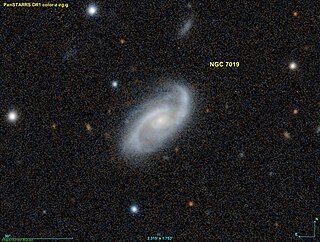
NGC 7019 is a spiral galaxy located about 480 million light-years away in the constellation of Capricornus. It was discovered by American astronomer Francis Leavenworth in 1886. It is host to a supermassive black hole with an estimated mass of with an estimated mass of 7.5 × 107M☉.
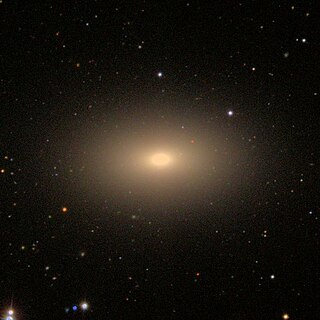
NGC 4473 is an elliptical galaxy located about 50 million light-years away in the constellation of Coma Berenices. It was discovered by astronomer William Herschel on April 8, 1784. NGC 4473 has an inclination of about 71°. NGC 4473 is a member of a chain of galaxies called Markarian's Chain which is part of the larger Virgo Cluster of galaxies.
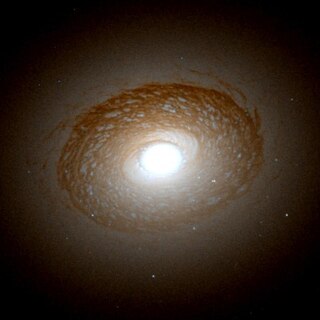
NGC 4459 is a lenticular galaxy located about 50 million light-years away in the constellation of Coma Berenices. NGC 4459 is also classified as a LINER galaxy. NGC 4459 was discovered by astronomer William Herschel on January 14, 1787. NGC 4459 is a member of the Virgo Cluster.
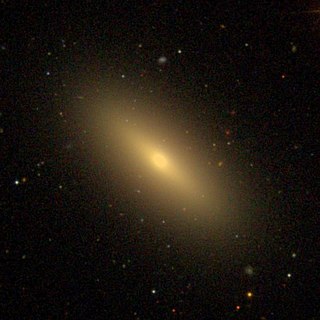
NGC 4564 is an elliptical galaxy located about 57 million light-years away in the constellation Virgo. NGC 4564 was discovered by astronomer William Herschel on March 15, 1784. The galaxy is also a member of the Virgo Cluster.
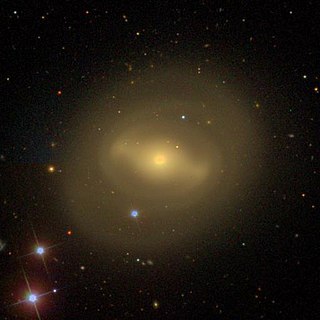
NGC 4596 is a barred lenticular galaxy located about 55 million light-years away in the constellation Virgo. NGC 4596 was discovered by astronomer William Herschel on March 15, 1784. NGC 4596 is a member of the Virgo Cluster and has an inclination of about 38°.
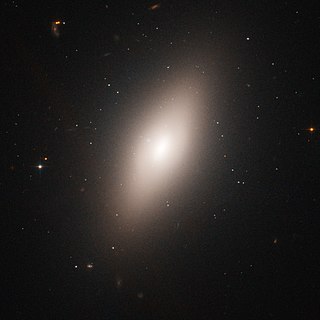
NGC 4660 is an elliptical galaxy located about 63 million light-years away in the constellation Virgo. The galaxy was discovered by astronomer William Herschel on March 15, 1784 and is a member of the Virgo Cluster.

NGC 708 is an elliptical galaxy located 240 million light-years away in the constellation Andromeda and was discovered by astronomer William Herschel on September 21, 1786. It is classified as a cD galaxy and is the brightest member of Abell 262. NGC 708 is a weak FR I radio galaxy and is also classified as a type 2 Seyfert galaxy.

NGC 1428 is a peculiar galaxy of an uncertain morphology; either an elliptical or lenticular galaxy located approximately 65 million light-years away from Earth.

NGC 4326 is a barred spiral galaxy with a ring located about 330 million light-years away in the constellation Virgo. It was discovered by astronomer William Herschel on April 13, 1784, who described it as "vF, S, R, bM, 1st of 3". It is a large galaxy, with a diameter of around 200,000 ly (61 kpc) making it nearly twice the size of the Milky Way. NGC 4326 is also classified as a LINER galaxy. Despite being listed in the Virgo Cluster catalog as VCC 623, it is not a member of the Virgo Cluster but instead a background galaxy.

NGC 4329 is an elliptical galaxy located 144 million light-years away in the constellation Corvus. The galaxy was discovered by astronomer John Herschel on March 9, 1828. NGC 4329 is host a supermassive black hole with an estimated mass of 3.1×108 solar masses. NGC 4329 is a member of a group of 5 galaxies known as [T2015] nest 100478. NGC 4329 is the brightest member of this group and the group includes the galaxies IC 785, IC 786, MCG-02-32-006, and LEDA 170189. The redshift of NGC 4329 places it in the within the bounds of the Hydra-Centaurus supercluster.

NGC 4310 is a dwarf spiral galaxy with a dust lane and ring structure located about 54 million light-years away in the constellation Coma Berenices. It was discovered by astronomer William Herschel on April 11, 1785. It was rediscovered by astronomer Heinrich d'Arrest on May 19, 1863, and was later listed as NGC 4338. The galaxy is host to a supermassive black hole with an estimated mass of 107 solar masses.



















